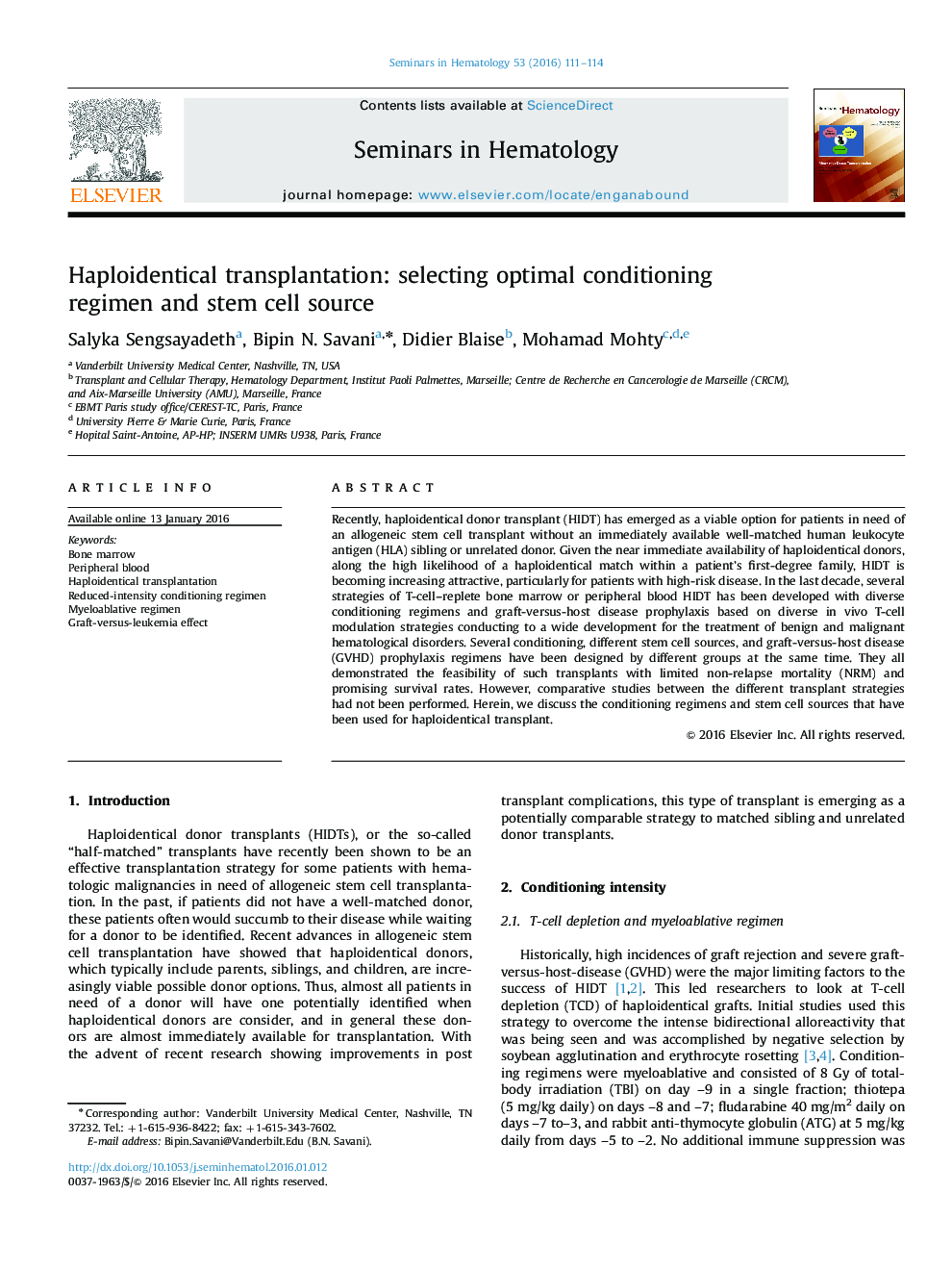| Article ID | Journal | Published Year | Pages | File Type |
|---|---|---|---|---|
| 3333386 | Seminars in Hematology | 2016 | 4 Pages |
Recently, haploidentical donor transplant (HIDT) has emerged as a viable option for patients in need of an allogeneic stem cell transplant without an immediately available well-matched human leukocyte antigen (HLA) sibling or unrelated donor. Given the near immediate availability of haploidentical donors, along the high likelihood of a haploidentical match within a patient’s first-degree family, HIDT is becoming increasing attractive, particularly for patients with high-risk disease. In the last decade, several strategies of T-cell–replete bone marrow or peripheral blood HIDT has been developed with diverse conditioning regimens and graft-versus-host disease prophylaxis based on diverse in vivo T-cell modulation strategies conducting to a wide development for the treatment of benign and malignant hematological disorders. Several conditioning, different stem cell sources, and graft-versus-host disease (GVHD) prophylaxis regimens have been designed by different groups at the same time. They all demonstrated the feasibility of such transplants with limited non-relapse mortality (NRM) and promising survival rates. However, comparative studies between the different transplant strategies had not been performed. Herein, we discuss the conditioning regimens and stem cell sources that have been used for haploidentical transplant.
